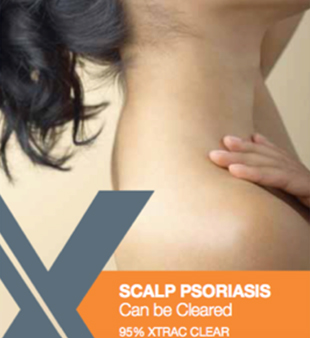Our priority is getting you on the fast track to relief. Call us today - we’ll take care of the rest!
Our dedicated XTRAC Patient Support Center specializes in
Our Patient Advocates can answer your questions about XTRAC and assist you every step of the way.
Have your insurance ready so we can verify coverage for you.

- Over 5 Million Treatments
Performed.
- Clinical Results
- Convenient Appointments
START NOW to GET EVEN 1-800-908-1044
Have your insurance information ready.
About Vitiligo
(pronounced vit-ill-EYE-go)
 What Is Vitiligo?
What Is Vitiligo?
Vitiligo is a pigmentation disorder in which melanocytes—the cells that make pigment—in the skin are destroyed. Once the melanocytes are destroyed, white patches surface on the skin. These white patches may appear on any location of the body and in many areas. This destruction is thought to be due to an acquired autoimmune problem, but the cause is unknown.
Who is affected by vitiligo?
About 0.5 to 1 percent of the world's population, or as many as 65 million people, have vitiligo. In the United States, 1 to 2 million people have the disorder. Half the people who have vitiligo develop it before age 20; most develop it before their 40th birthday. The disorder affects both sexes and all races equally; however, it is more noticeable in people with dark skin.
What does vitiligo look like?
Those who develop vitiligo usually first notice white patches (depigmentation) on their skin, most commonly on sun-exposed areas of the body, including the hands, feet, arms, face, and lips. Other commonly affected areas are the armpits, groin and around the mouth, eyes, nostrils and navel.
The disorder generally appears in one of three patterns:
- FOCAL, where depigmentation is limited to one or only a few areas.
- SEGIMENTAL, where patches develop on one side of the body only.
- GENERALIZED PATTERN—the most common pattern—where depigmentation
occurs symmetrically on both sides of the body.
What are the emotional and psychological effects of vitiligo?
Although vitiligo is usually not harmful medically and causes no physical pain, its emotional and psychological effects can be deeply disturbing. Regardless of a person's race and culture, white patches of vitiligo can cause emotional stress, particularly if the condition develops on visible areas of the body (such as the face, hands, arms, and feet) or on the genitals. Adolescents, who are often particularly concerned about their appearance, can be devastated by widespread vitiligo. Some people who have vitiligo feel embarrassed, ashamed, depressed, or worried about how others will react.
Does my physician offer the XTRAC Therapy for treating Vitiligo?
Contact us at 1-800-908-1044 and we can tell you if your physician offers the XTRAC Therapy. If your physician does not offer the XTRAC Therapy, we can provide you the name of a physician nearest you that does.